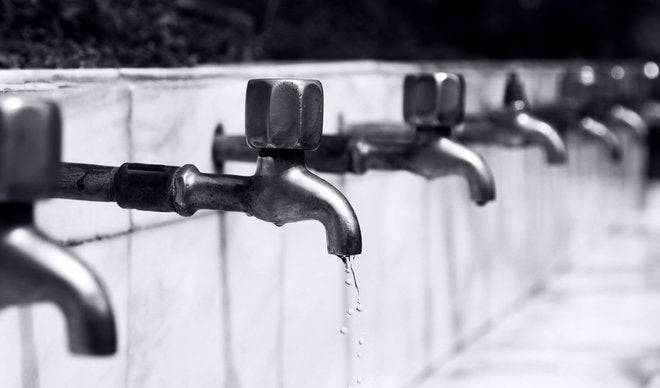Low coverage rates for clean water and sanitation leave Haiti exposed to significant health burdens. According to the latest estimates, 72% of Haiti’s population lack access to improved sanitation facilities and use either shared facilities, other improved facilities, or defecate in the open.

In urban areas, 66% of the population lacks access to improved facilities while in rural areas, 81% of the total population lacks access to improved facilities.
Between 2,000 and 4,500 people die each year from diarrheal disease. And the lack of basic water and sanitation services has contributed to the spread of waterborne diseases, including the cholera outbreak introduced by U.N. peacekeeping troops in 2010.
Better water and sanitation services would make it harder for such diseases to spread. But here, as in every other policy area, Haiti faces options.
Examining competing policy options is the purpose of the Haiti Priorise research project. More than 50 economists have written new research papers studying the costs and benefits of different proposals to improve the nation’s environmental, economic, and social conditions.
Among the research are two new research papers on water and sanitation. The first of these is by Professor Dale Whittington of the University of North Carolina at Chapel Hill, and two colleagues. Professor Whittington has worked out the costs and benefits of providing sanitation services to rural households.
The National Plan for the Elimination of Cholera in Haiti, 2013–2022 specifically calls for interventions to improve water and sanitation conditions across the country and especially in remote rural areas with limited access to healthcare facilities. Many international organizations and NGOs have responded by investing in this sector. However, many rural Haitians continue to live without access to these basic services.
The first option Professor Whittington considers is the use of a borehole and hand-pump. While this system is easy to operate, maintaining it can be a challenge. The upfront financial cost of digging a borehole and setting up a hand-pump is estimated to be 443,000 gourdes (US$6,500) for the parts and installation. An associated education campaign and the establishment of a community management structure – to ensure repairs and community-level management – costs an additional 238,000 gourdes (US$3,500). Therefore, the total upfront cost per borehole and hand-pump is estimated to be 682,000 gourdes (US$10,000).
One system would serve 60 households, so for each household the cost would be 11,000 gourdes (US$167). Adding in maintenance costs, the total costs over the lifetime of the 15 years of the technology, per month, per household, is about 150 gourdes (US$2.20).
This would save people time from collecting water, and it would have health benefits. In total terms, the benefits would be worth 2.2 gourdes for every 1 gourde spent.
An alternative approach for rural communities is to focus on achieving community-led total sanitation, known as CLTS. This is a behavior change strategy for ending open defecation that attempts to raise awareness among community members of the risks associated with open defecation. The aim is to increase villagers’ perceived need to end open defecation and to ensure that every household and individual uses a latrine, thereby achieving “total sanitation.” This requires a campaign to get everyone onboard at the community, but it also requires constructing latrines. The upfront financial cost per household for constructing a pit latrine in rural Haiti is estimated to be US$20, plus a monthly US$0.30 program cost per household to cover the expenses of delivering the behavioral intervention, and another US$0.42 per household per month for operations and maintenance – including things like purchasing soap, a pail, or other necessary items to clean or repair a latrine. The total monthly cost, therefore, is $1.10 per household per month. The benefits are both averted health problems and time saved from not having to walk far to defecate – in total about $1.21.
In another paper, Dr. Rachel Sklar of the UC Berkeley School of Public Health studies opportunities to improve urban sanitation. Currently there are 741,000 urban households that lack access.
The first approach she considers would connect a household latrine to a septic tank, emptied by a professional company once every 4.5 years.
The second approach is to use so-called “container-based sanitation”, where a household container-based toilet is emptied professionally once per week. The waste is transformed into products like animal feed, fertilizer, or compost. This approach has been gaining traction in urban areas of Kenya, Ghana, Haiti and Peru, where issues like land tenure or lack of available space preclude households from having a safe sanitation system within their homes. Since a container-based toilet requires little modification to the house, it is suitable for tenants and single room dwellings.
The costs of achieving near-total urban sanitation with both methods are roughly comparable. It costs 1.6 billion gourdes in total for the container-based solution, and 1.8 billion gourdes for the pit latrine approach.
Achieving universal sanitation in urban areas for all 3.7 million urban dwellers lacking good sanitation would unlock health, productivity and educational benefits. It would save 254 deaths from diarrhea each year, and avert 796,893 diarrhea cases. Put into financial terms, the deaths avoided are worth 664 million gourdes. Time savings are worth another 433 million gourdes. Other savings include the avoided illness, avoided healthcare costs, and the benefits of children spending more time in school.
Added up, the total benefits for achieving urban sanitation are worth 1.7 billion gourdes. This is similar to the amount that it would cost to deliver a container-based sanitation approach, and slightly lower than the costs of a pit latrine approach.
Of course, in reality politicians and donors tend not to make a stark decision between serving rural or urban populations first – and rightly so. The new research papers do serve a purpose, however, in helping decision-makers fully understand the impacts and effects from approaching water and sanitation issues in different ways.
